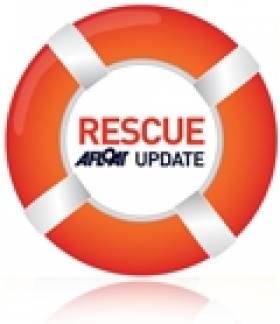Displaying items by tag: Garrettstown Beach
Kinsale Coast Guard in Daring Cliff Rescue
The Irish Coast Guard's Kinsale unit was involved in the dramatic rescue of a man clinging to the sheer side of a cliff on Sunday.
TheJournal.ie reports that the man, a 20-something English tourist, had been caught on the beach below at high tide and tried to climb the cliff face to escape, but got into difficulty half-way up.
The man was spotted by a couple walking the clifftop near Garrettstown Beach, who alerted the Old Head of Kinsale coastguard unit.
A cliff rescue expert abseiled down to attach a lifeline and harness, and the man was lifted to safety. He was treated at the scene for cuts and bruises.
Unit officer in charge Eddie Butler told the Irish Examiner that the man didn’t know how he had held on as long he did.
"When we arrived and saw the situation, I didn’t think we’d save him. I think we got to him just in time," said Butler. "The water was raging beneath him. If he had lost his grip and fell in, he would have been lost."
Elsewhere, six people were rescued from a sinking cruiser in the River Shannon on Sunday afternoon following its collision with a bridge in Killaloe, Co Clare.
According to The Irish Times, two members of the Irish Coast Guard's Killaloe unit arrived quickly on scene two help the six occupants and their dog to safety on the riverside.
The Killaloe unit reports that the cruiser was subsequently run aground in the shallows at Ballyvalley to prevent its sinking.





























































